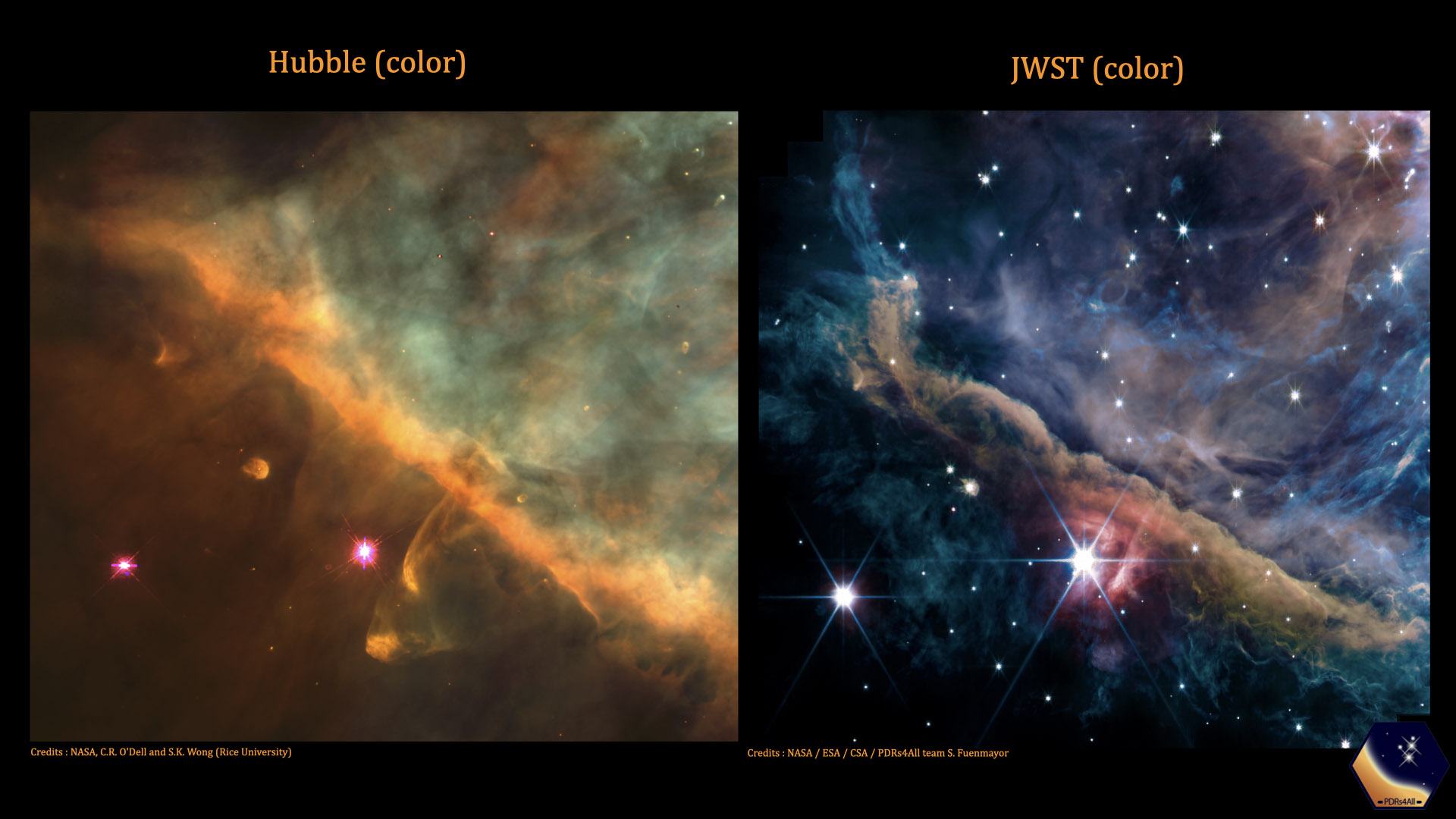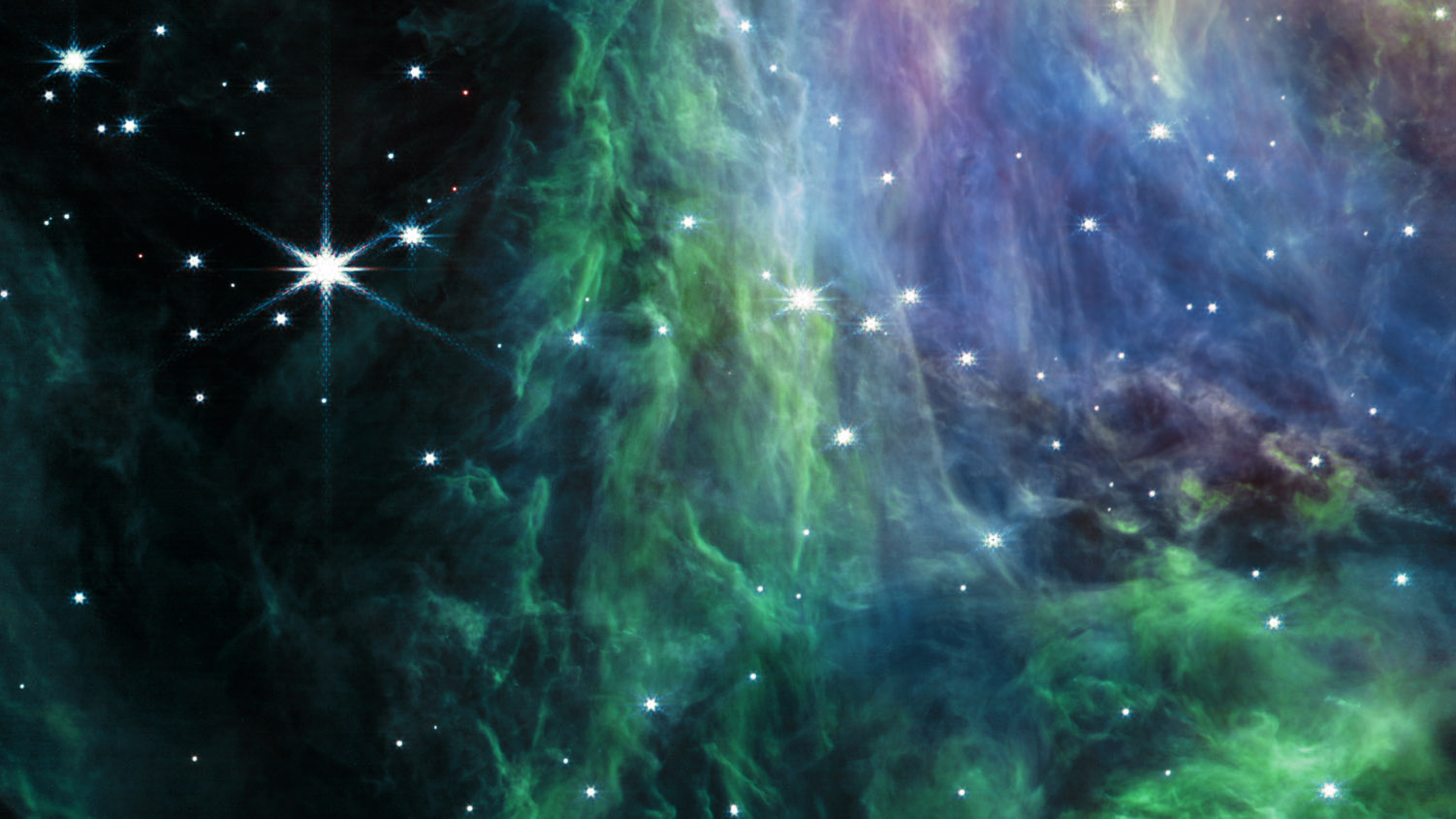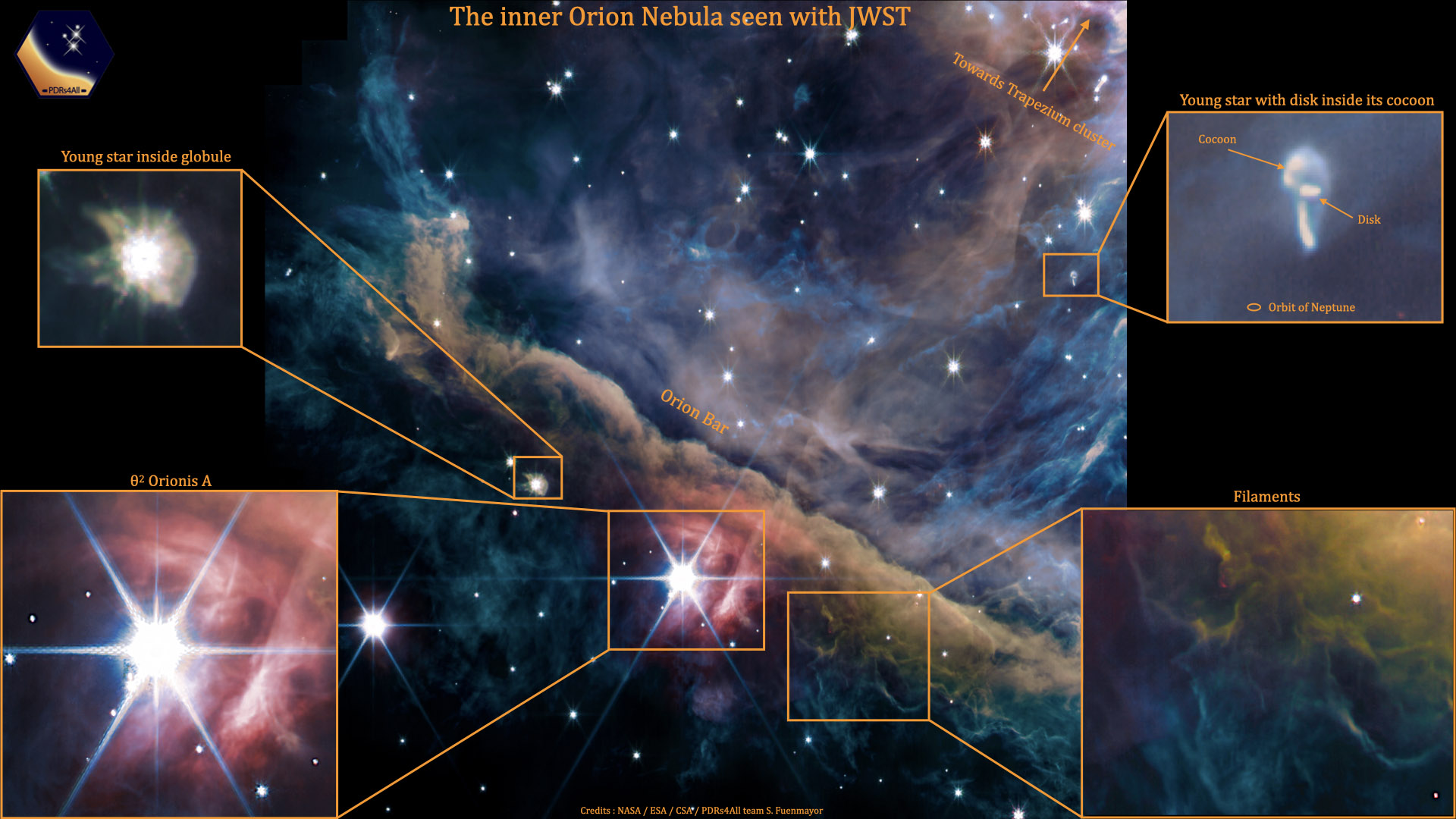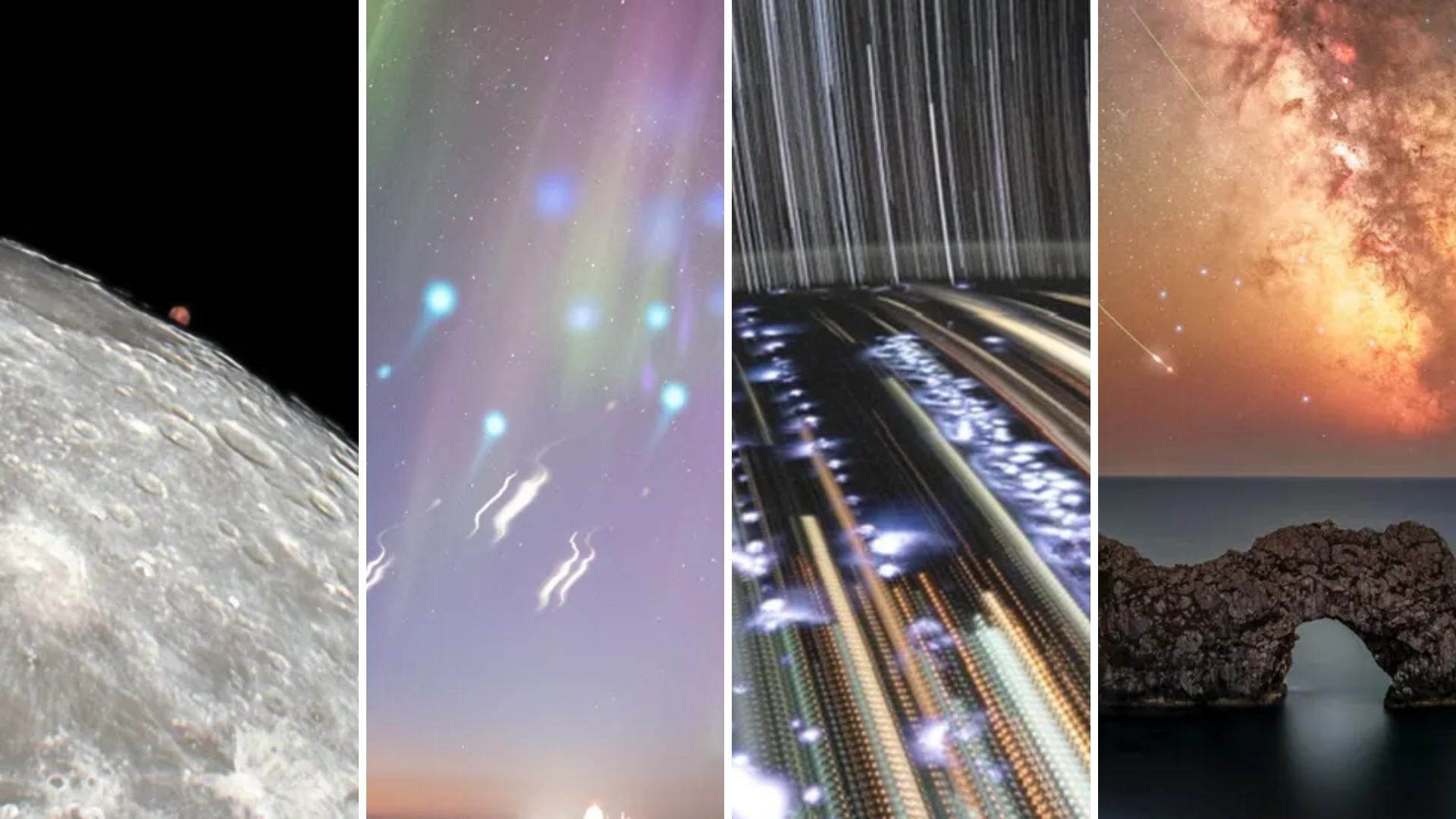James Webb Space Telescope spots baby stars cocooned in the Orion Nebula
The Orion Nebula is one of the brightest star-forming regions visible in the night sky even with the naked eye.

Newborn stars still wrapped in cocoons of dust and gas are revealed in a new image of the famous Orion Nebula captured by the James Webb Space Telescope.
The image, taken on Sunday (Sept. 11) with the James Webb Space Telescope's NIRCam instrument reveals unprecedented details of the Orion Nebula, a known star-forming region that is visible even to the naked eye. Fine structures in the dense dust and gas clouds that form the nebula come to the fore in the image with much greater clarity than in a previous image captured by Webb's predecessor, the Hubble Space Telescope.
The nebula, which can be found in the night sky in the constellation Orion just south of the archer's belt, features a wall of dense gas and dust known as the Orion Bar. Inside this bar, energetic photons from stars in the Trapezium cluster (in the top right corner of the image) mix with a molecular cloud, triggering complex ionizing reactions. At the center of the bar, the star Theta2 Orionis A (or θ2 Ori) shines brightly with the characteristic diffraction spikes that are a side-effect of the design of the James Webb Space Telescope's mirror.
Related: Marvel at the James Webb Space Telescope's largest image of the cosmos yet
The image also reveals new-born stars at various stages of their development. Toward the upper left corner of Theta2 Orionis A, inside the bar, is a young star forming inside a globule, a shroud of dust and gas that has collapsed together under the force of gravity to give rise to the new star. On the right-hand side, below the Trapezium cluster, is a star wrapped in a cocoon of planet-forming material that is being eroded by the strong ultraviolet radiation from the Trapezium stars.



The star in this image, called HST-10, is one of about 180 young stars with "photo-evaporating disks" that have been discovered in the Orion Nebula, scientists said in a statement.
The image, a composite created by stacking multiple photos taken with several different filters, also reveals twisting filaments of hydrocarbon-rich dust and gas.
Breaking space news, the latest updates on rocket launches, skywatching events and more!
A comparison image captured with the Spitzer Space Telescope, NASA's earlier infrared observatory, highlights the technological advances accomplished through the James Webb Space Telescope and the superb level of detail provided by the new telescope.
Follow Tereza Pultarova on Twitter @TerezaPultarova. Follow us on Twitter @Spacedotcom and on Facebook.

Tereza is a London-based science and technology journalist, aspiring fiction writer and amateur gymnast. She worked as a reporter at the Engineering and Technology magazine, freelanced for a range of publications including Live Science, Space.com, Professional Engineering, Via Satellite and Space News and served as a maternity cover science editor at the European Space Agency.

